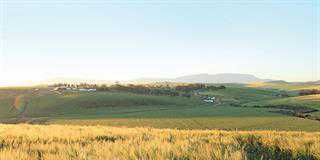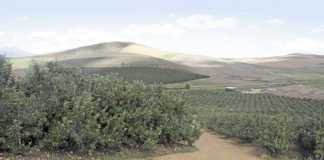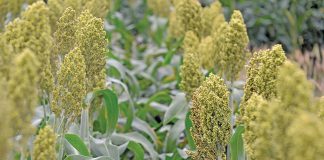“Slurry has become increasingly valuable to the dairy industry as fertiliser price increases have been huge compared to the milk price increase,” says dairy technical consultant Gavin Brockett. “But we suspect the fertiliser price will continue to adjust downwards with the current economic crisis.” Before making decisions on ordering fertiliser or changing a nutrient management programme, a farmer must know the nutrient content of manure and its availability.
Gavin sampled the first and second lagoons at farmer René Stubbs’s dairy farm in the Karkloof, KwaZulu-Natal. The first lagoon, containing solids, had a moisture content of 97%, and a nitrogen (N) content of 2,9%, a phosphorus (P) content of 0,87% and a potassium (K) content of 1,15%, all measured on a dry matter basis.
The second lagoon, containing more liquid, had corresponding values of 99% moisture and a 2,3% N, 3,51% P and 4,52% K content on a dry matter basis. “There’s a significant variation in liquid and solid slurry. The lighter fractions tend to be higher in K and sometimes in P.
Either way, it represents a significant return of nutrients to the system via the cow. But it’s a bulky product and adds a large amount of water to the land.” A 500kg dairy cow typically produces 41kg manure with an 87% moisture content daily. Four cows on a hectare can return 329kg N, 58kg P and 263kg K annually to that field every year, around 80% of which is deposited directly on the land while grazing and 15% to 20% ending up in the dairy parlour.
Dairy slurry averages 2,27% N, 0,79% P and 1,70% K. Of this, only about 30% of the N, 50% of the P and 90% of the K is available to the crop during the first growing season after application. “This means dairy slurry in fact provides 0,68% N, 0,40% P and 1,53% K,” says Gavin. “The real value of slurry is the P and K, as N can be disappointing.”
Nitrogen losses from manure
Predicting N availability is difficult because N can be lost before plants can absorb it and because N is present in two forms – a rapidly available form (ammonia-N) and a slowly available organic form in manure. N from fresh manure and slurry loses 25% of its value one day after application, increasing to nearly 40% on day two, 50% on day three and 60% after seven days.
“Fresh manure has the lowest ammonia content,” explains Gavin. “The longer you store it, the higher the ammonia content of the N fraction becomes. When you apply it to the surface, but don’t work it into the soil, more N is lost. We’ve had reports of 99% N loss. So don’t put too much emphasis on the N value as you can lose a lot of it.”
Gavin uses interesting figures to illustrate his point. “Assume slurry with a 50% ammonia N content is applied at 30 000â„“/ha and left exposed on the soil for three days. This would be 88kg/ha N at time of application. After three days, only 20kg/ha of N is available in the first year’s plant production. More becomes available over three years in declining amounts. In the first year, perhaps only 30% of the N originally present in the dairy slurry is available.”
To calculate whether using slurry is worth the cost, Gavin has the following equation: “At 30 000â„“/ha in the first year, assume it has an available nutrient content in year 1 of 0,54% N, 0,4% P, 1,53% K and 0,45% S (sulphur) at a cost of R17/m³ or R500/ha. Chemical fertiliser equivalents would cost about R2 000/ha at R16/kg N, R51/kg P, R18/kg K and R2,5/kg S.
The thick and the thin of slurry
The nutritional content of thick and thin slurry differs. Thick slurry (at 74,8% moisture) contains 0,71% N, 0,43% P and 1,07% K on a dry matter basis, while thin slurry (at 99,5% moisture) contains, 0,54% N, 1,76% P and 4,07% K. At an application rate of 30m³/ha and an assumed average fertiliser price, the fertiliser equivalent value of thick slurry is R4 500/ha, dropping to R2 000/ha for intermediate slurry and R265/ha for thin slurry.
These prices do not include application to the lands. “A farmer should use slurry on land low in nutrients such as for growing hay pasture or maize silage,” recommends Gavin. “How to apply it depends on the cost, the best being to inject it into the soil or apply it ahead of soil preparation or planting. On grazed lands, apply slurry in bands or inject it and apply the thinner liquid from the second lagoon through the irrigation system.”
“Sample and analyse the soil regularly to monitor soil fertility. The K content of slurry contributes significantly to the soil K reserves, but can quickly become excessive and must be monitored.” Incorporating slurry into soil has no measurable effect on pH but has a positive effect on humus content over time. The effect on P reserves can be significant, but P may also be fixed or complexed in the soil, while calcium also has a positive effect on soil reserves.
Gavin concludes that at the current fertiliser price, there’s money in muck. “Dairy effluent has to be disposed of. But it is highly variable so don’t assume. Do the sums. It boils down to choosing the method best suited to your farm, if it is cost-effective and minimises the negative impact on soil and the environment.”
Contact Gavin Brockett on e-mail [email protected].













